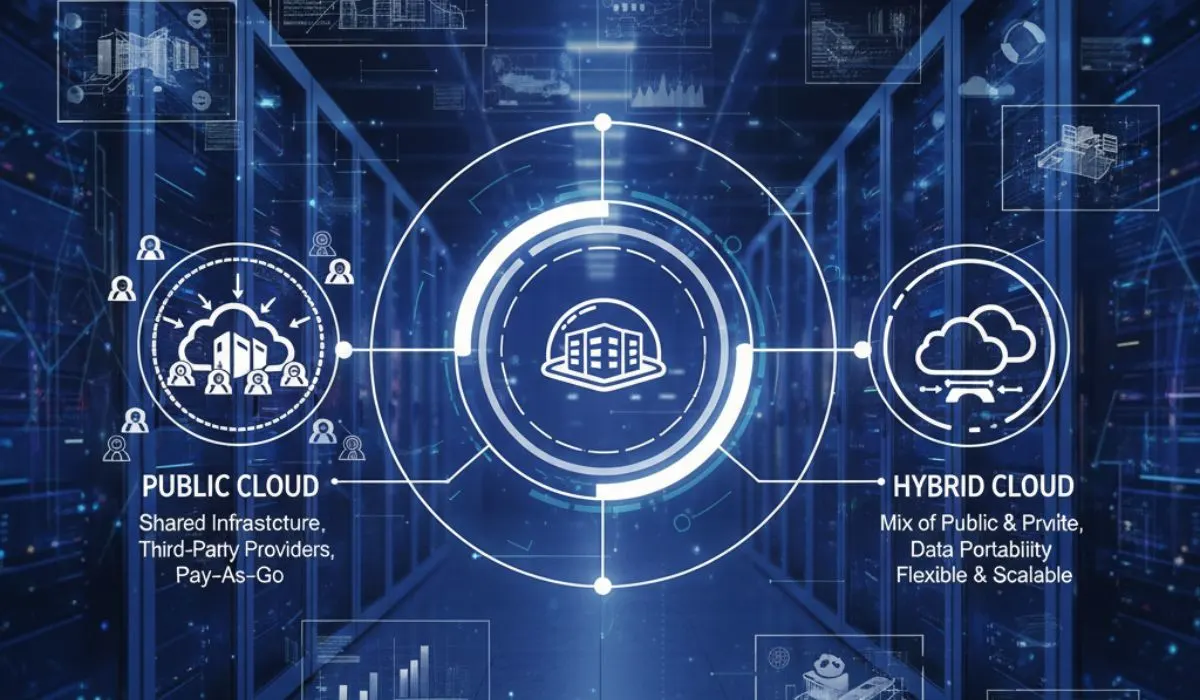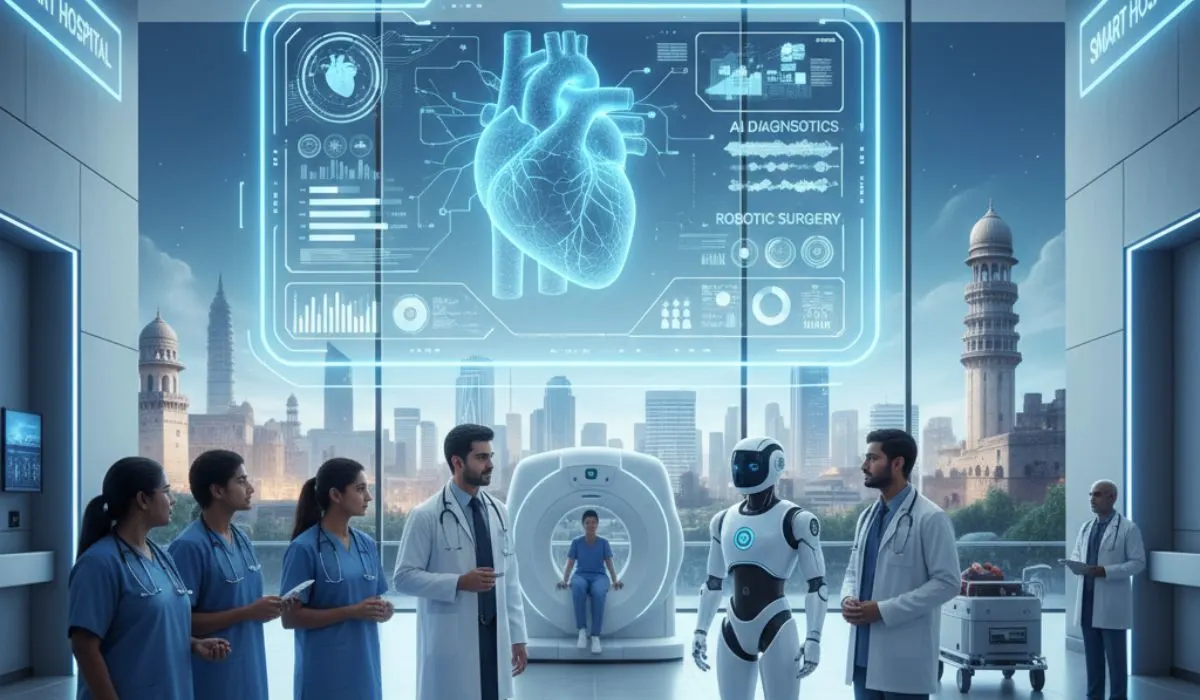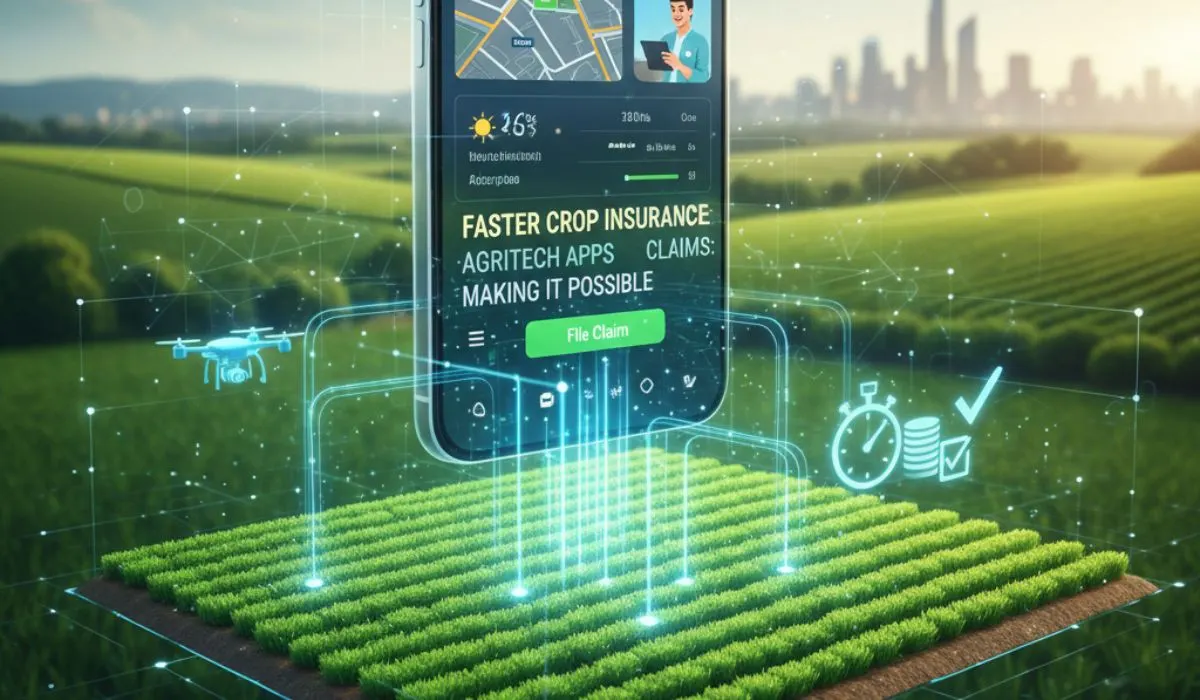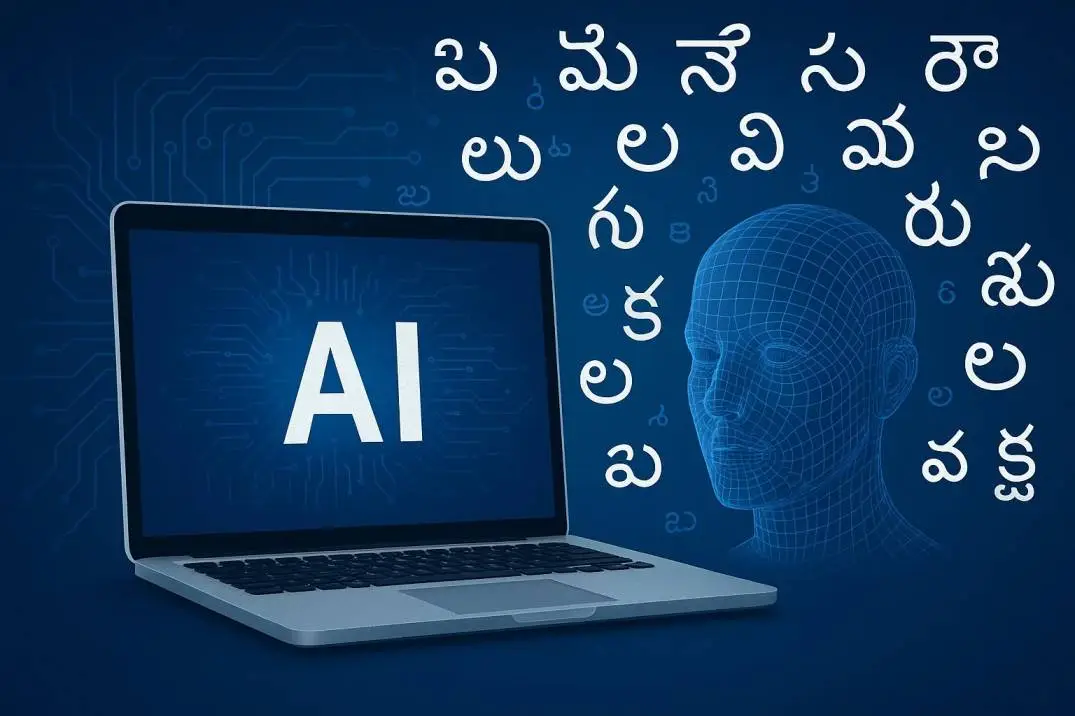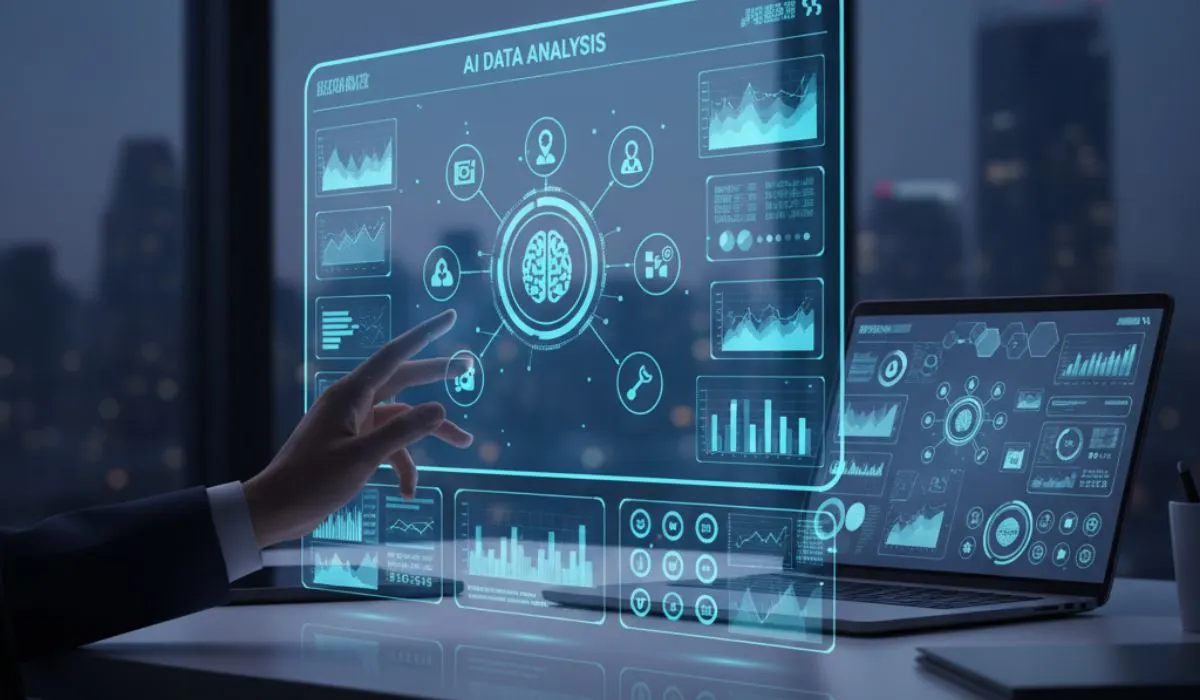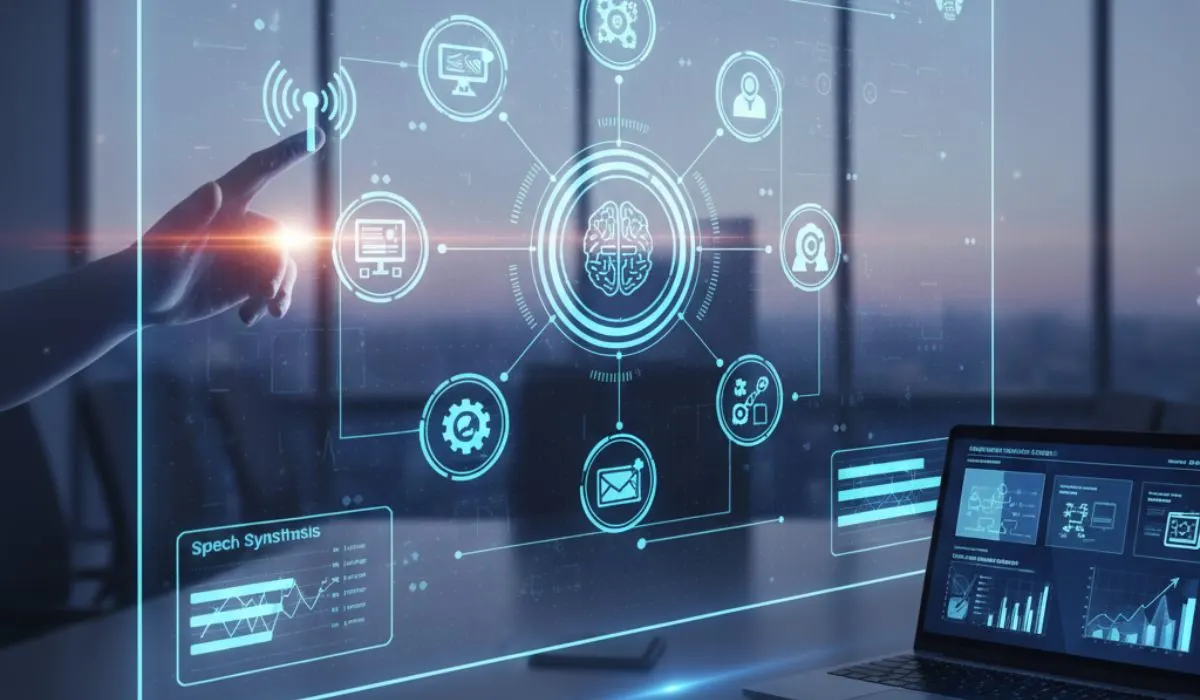I've been watching the cloud computing world change before my eyes. As someone who's worked with technology for years, I can tell you that 2025 is bringing some amazing changes to how we use the cloud. Let me share what I've learned about the biggest trends coming our way.
What Is Cloud Computing and Why Should You Care?
Before we dive into the exciting trends, let me explain cloud computing in simple terms. Think of it like renting a computer that lives somewhere else. Instead of buying your own computer, you use one over the internet. It's like Netflix for computers - you pay to use it when you need it. I remember when I first started using cloud services. It felt like magic! I could access my files from anywhere and didn't worry about my computer breaking. That's the power of cloud computing. The cloud has changed how we work, play, and live. From storing photos to running big businesses, everything now happens in the cloud. And 2025 is bringing even cooler changes.
The Most Important Cloud Computing Trends In 2025
This year is special for cloud technology. I've seen patterns that show us where things are heading. Let me walk you through the biggest changes coming our way.
Edge Computing Gets Closer to You
Edge computing is like having a mini cloud right in your neighborhood. Instead of sending your data far away to big data centers, edge computing brings the power closer to you. I've noticed this trend growing fast. When you use your phone to take a photo, edge computing can edit it right on your device. No waiting for slow internet! This makes everything faster and smoother. Companies are building more edge computing centers in cities and towns. By 2025, I expect most of us will use edge computing without even knowing it. Your smart TV, car, and even your refrigerator might use edge computing to work better.
Future Trends in Cloud Computing: AI and Machine Learning Take Over
Artificial Intelligence (AI) is becoming the brain of cloud computing. I've watched AI grow from a cool idea to something we use every day. In 2025, AI will be everywhere in the cloud. When I use voice assistants or get music recommendations, that's AI working in the cloud. But 2025 will bring much more. AI will help:
- Make websites load faster
- Keep our data safer
- Fix problems before they happen
- Save money on cloud costs
Machine learning, which is AI's smart cousin, will also grow bigger. It learns from what we do and gets better over time. I've seen it help doctors, teachers, and even farmers work better.
Server less Computing Becomes the New Normal
Server less computing sounds confusing, but it's actually simple. It means you don't need to worry about the computer running your app. The cloud company takes care of everything. I love server less computing because it's like having a magic helper. When lots of people use your app, it automatically gets more power. When fewer people use it, it uses less power and costs less money. In 2025, I predict most new apps will use server less computing. It's easier, cheaper, and works better than old methods.
Cloud Computing Trends in 2025 in India: A Growing Digital Nation
India is becoming a cloud computing superstar! I've watched India grow from a country just starting with technology to one leading the world in cloud innovation.
Digital India's Cloud Journey
The Indian government's Digital India program has pushed cloud computing forward fast. I've seen small villages get internet and use cloud services for the first time. It's amazing to watch! Indian companies are building their own cloud services too. They understand local needs better than foreign companies. This creates jobs and keeps money in the country.
Startup Revolution in Indian Cloud Services
Indian startups are creating cool cloud solutions. I've met young entrepreneurs who've built cloud services that millions of people use. They're solving problems that big foreign companies didn't even know existed.
Some areas where Indian cloud companies are doing great:
- Mobile-first cloud apps
- Low-cost cloud solutions
- Cloud services in local languages
- Agricultural cloud tools
Government and Cloud Adoption
The Indian government is using cloud computing for citizen services. I've used government websites that work on cloud technology. They're faster and more reliable than before. By 2025, I expect most government services in India to run on cloud computing. This will make life easier for everyone.
Multi-Cloud Strategies Become Essential
Multi-cloud means using cloud services from different companies at the same time. It's like shopping at different stores to get the best deals. I've learned that putting all your digital eggs in one basket is risky. What if that cloud company has problems? Multi-cloud strategies protect you by spreading the risk.
In 2025, smart businesses will use:
- Amazon Web Services for some things
- Google Cloud for others
- Microsoft Azure for different needs
- Local cloud providers for special requirements
This might sound complicated, but new tools are making it easier. I've used platforms that help manage multiple cloud services like they're one big service.
Security Gets Smarter and Stronger
Cloud security is like protecting your house, but the house is made of computer code. I've seen how important good security has become as more of our lives move to the cloud.
Zero Trust Security Models
Zero Trust security assumes everyone might be a bad guy until proven otherwise. It sounds paranoid, but it works! I've seen companies avoid big security problems because they used Zero Trust. In Zero Trust, every person and device must prove they're allowed to access something. It's like having a security guard check your ID every time you enter a building, even if they saw you yesterday.
Advanced Threat Detection
AI is making cloud security much smarter. I've watched security systems learn to spot unusual behavior and stop attacks before they cause damage.
These smart security systems can:
- Notice when someone tries to access data they shouldn't
- Stop viruses from spreading
- Warn about suspicious activity
- Fix security holes automatically
Sustainable Cloud Computing Takes Center Stage
Green cloud computing is becoming important as we worry more about climate change. I've seen cloud companies work hard to use clean energy and reduce waste.
Energy-Efficient Data Centers
Cloud companies are building data centers that use less electricity. They're using solar power, wind power, and other clean energy sources. Some data centers I've visited are completely powered by renewable energy!
Carbon-Neutral Cloud Services
Many cloud companies promise to remove as much carbon from the air as their services create. This is called being "carbon neutral." I think this trend will grow huge in 2025 as more people care about the environment.
10 Facts About Cloud Computing That Will Surprise You
Let me share some cool facts I've learned about cloud computing:
- Most of the internet runs on just a few giant data centers - These buildings are bigger than football fields!
- Cloud computing saves companies about 15% on IT costs - That's like getting a discount on everything tech-related.
- Over 90% of businesses use some form of cloud computing - Almost everyone is doing it now.
- A single data center can use as much electricity as a small city - That's why green energy is so important.
- Cloud computing creates millions of jobs worldwide - It's a job-making machine!
- You probably use cloud computing 20+ times per day - Every app, website, and service likely uses the cloud.
- Cloud storage is safer than keeping files on your computer - Professional security beats home security every time.
- The cloud computing market grows by over 15% every year - It's one of the fastest-growing industries.
- Small businesses can access the same powerful tools as big companies - The cloud levels the playing field.
- Cloud computing helps reduce electronic waste - Sharing resources means less hardware needed overall.
Hybrid Cloud Solutions Bridge the Gap
Hybrid cloud is like having the best of both worlds. You keep some important stuff at home (private cloud) and put other things in the public cloud. I've helped many companies set up hybrid cloud systems, and they love the flexibility.
Why Hybrid Cloud Makes Sense
Some data is too sensitive to put in the public cloud. Think about medical records or bank information. Hybrid cloud lets companies keep sensitive data private while using public cloud for everything else.
I've seen hospitals use hybrid cloud to:
- Keep patient records secure on private servers
- Use public cloud for appointment scheduling
- Share research data safely with other hospitals
Making Hybrid Cloud Work
The trick to hybrid cloud is making everything work together smoothly. New tools are making this easier. I've used platforms that make hybrid cloud feel like one big system instead of separate pieces.
Quantum Computing Meets the Cloud
Quantum computing sounds like science fiction, but it's becoming real! These super-powerful computers can solve problems that regular computers can't handle.
Quantum Cloud Services
I've had the chance to try quantum computing through cloud services. It's incredible! These computers can:
- Break codes that would take regular computers millions of years
- Find new medicines faster
- Predict weather more accurately
- Solve traffic problems in big cities
The Future of Quantum Cloud
By 2025, I expect quantum computing to be available to more people through cloud services. You won't need to buy a quantum computer (they cost millions of dollars anyway). You'll just rent time on one through the cloud.
Low-Code and No-Code Platforms Explode
Low-code and no-code platforms let people build apps without being expert programmers. It's like using building blocks instead of starting from scratch. I've watched my non-technical friends create amazing apps using these platforms. They drag and drop pieces to build what they want. No complicated coding required!
Democratizing App Development
These platforms are changing who can build technology. I've seen:
- Teachers create educational apps
- Small business owners build customer service tools
- Artists make interactive websites
- Students develop solutions for their communities
Cloud-Powered Development
Most low-code and no-code platforms run in the cloud. This means your app automatically gets all the benefits of cloud computing - it's fast, reliable, and can handle lots of users.
Container Technology Revolutionizes Deployment
Containers are like shipping containers for software. They package an app with everything it needs to run anywhere. I've used containers to make deploying apps much easier and more reliable.
Kubernetes Orchestration
Kubernetes is like a conductor for an orchestra of containers. It makes sure all your containers work together harmoniously. I've seen it manage thousands of containers at once without breaking a sweat.
Microservices Architecture
Instead of building one giant app, microservices break things into small pieces. Each piece does one job really well. If one piece breaks, the others keep working. I love this approach because it makes apps more reliable and easier to update.
Future Trends in Cloud Computing: What's Next?
Looking ahead, I see some exciting developments coming:
5G and Cloud Integration
5G networks are super fast mobile internet. When combined with cloud computing, amazing things become possible. I imagine:
- Virtual doctor visits that feel like you're in the same room
- Augmented reality that works perfectly anywhere
- Self-driving cars that make decisions in milliseconds
- Smart cities that respond to problems instantly
Internet of Things (IoT) Explosion
IoT devices are everyday objects connected to the internet. Your smart doorbell, fitness tracker, and smart thermostat are all IoT devices. By 2025, I expect billions more IoT devices, all connected to the cloud.
Blockchain Integration
Blockchain technology is finding its way into cloud computing. It helps make cloud services more secure and transparent. I've seen early examples of blockchain-powered cloud storage that's nearly impossible to hack.
Challenges and Solutions in Cloud Adoption
Moving to the cloud isn't always easy. I've helped many organizations make the transition, and I've learned about common challenges and how to overcome them.
Data Migration Complexities
Moving existing data to the cloud can be tricky. It's like moving your entire house to a new city. You need to pack everything carefully and make sure nothing gets lost.
I've learned that successful cloud migration requires:
- Careful planning and timeline management
- Testing everything before the final move
- Having backup plans for when things go wrong
- Training people on new cloud tools
Skills Gap and Training
Many people don't know how to use cloud technologies yet. I've seen companies struggle because their employees need training. The solution is investing in education and training programs.
Cost Management
While cloud computing can save money, costs can also spiral out of control if not managed properly. I've seen companies get surprise bills because they didn't monitor their cloud usage.
Smart cost management includes:
- Regular monitoring of cloud spending
- Using automated tools to shut down unused resources
- Choosing the right pricing plans for your needs
- Optimizing resource allocation
Real-World Success Stories
Let me share some inspiring examples of cloud computing success I've witnessed:
Small Business Transformation
I know a local bakery that started using cloud computing for their online orders. Before the cloud, they could only handle 20 orders per day online. After moving to the cloud, they can handle 500 orders per day! Their business grew five times bigger.
Educational Innovation
A school I worked with moved their entire system to the cloud during the pandemic. Students could access their classes, homework, and grades from anywhere. Teachers could work from home but still help their students. The cloud saved their education program.
Healthcare Revolution
A rural clinic started using cloud-based medical records. Now doctors in the city can help patients in remote areas through video calls. The cloud brought expert medical care to places that never had it before.
Getting Started with Cloud Computing in 2025
If you're new to cloud computing, don't worry! I remember feeling overwhelmed when I first started. Here's how to begin:
Start Small and Simple
Don't try to move everything to the cloud at once. Start with something simple like email or file storage. I always recommend starting with basic services and learning as you go.
Choose the Right Provider
There are many cloud providers, each with strengths and weaknesses. Consider:
- Your budget and needs
- Where your customers are located
- What services you need most
- How much support you want
Plan for Security
Security should be your top priority from day one. Use strong passwords, enable two-factor authentication, and regularly back up your data. I've seen too many people learn this lesson the hard way.
Invest in Learning
Cloud technology changes fast. What I knew five years ago is already outdated. Keep learning through online courses, workshops, and hands-on practice.
The Economic Impact of Cloud Computing
The economic effects of cloud computing are huge. I've watched entire industries transform because of the cloud.
Job Creation
Cloud computing creates jobs in many areas:
- Cloud architects who design systems
- Security specialists who protect data
- Support technicians who help users
- Sales people who help businesses choose solutions
Cost Savings for Businesses
Businesses save money with cloud computing because they don't need to:
- Buy expensive servers and equipment
- Hire IT staff to maintain hardware
- Pay for electricity to run data centers
- Worry about equipment becoming outdated
Innovation Acceleration
The cloud makes it easier for people to try new ideas. I've seen startups launch apps that serve millions of users without investing in expensive equipment first.
Conclusion: Embracing the Cloud Computing Future
As I look at all these Cloud Computing Trends In 2025, I feel excited about what's coming. The cloud is making technology more accessible, affordable, and powerful for everyone. Whether you're a student, business owner, or just someone who uses technology every day, these trends will affect your life. The key is staying informed and being ready to adapt. I encourage you to start exploring cloud computing if you haven't already. Try cloud storage for your photos, use online collaboration tools, or experiment with cloud-based apps. The future is in the cloud, and it's arriving faster than ever.
The journey into cloud computing might seem overwhelming, but remember - every expert was once a beginner. I started with simple cloud storage and now I help companies transform their entire operations using cloud technology. 2025 is going to be an amazing year for cloud computing. From AI-powered services to quantum computing in the cloud, from sustainable data centers to edge computing in every neighborhood - the possibilities are endless. Stay curious, keep learning, and don't be afraid to try new cloud technologies. The future belongs to those who embrace the cloud, and that future is now.




